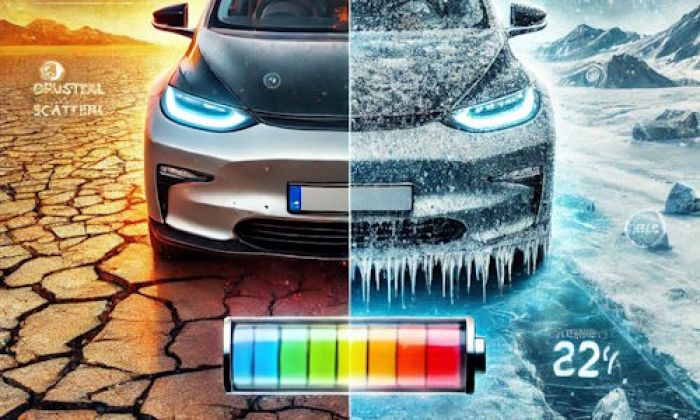P0134 diagnostic trouble code (DTC) can be a really tough one to deal with given that it's not a very common problem with all kinds of cars. Even in vehicles where this code appears, the problem and possible solutions can be different. In some cases, vehicle manufacturers define this code in ways that do not always mean the same thing.
P0134/P0135 code highlights
- Level of urgency:Medium
- Possible culprits:oxygen sensor1is malfunctioning, wiring problems
- Price for repair:$150 - $600
- If neglected:Fuel consumption growth, harsh work of the engine, failing emission test
- DIY repairs:Possible but complicated
- Can you drive?Yes

What Does the P0134 Harley Code Mean?
The P0134 appears when your car's O2 sensor malfunctions. This sensor is supposed to read the amount of oxygen in the exhaust but cannot accurately do this due to the error. Instead, The Power Control Module (PCM) misreads the fuel and oxygen ratio resulting in a poor fuel ratio.
The lack of enough oxygen in the exhaust is what triggers the power control module into decreasing the amount of fuel the vehicle uses. This is critical because of course, insufficient oxygen in the exhaust prevents optimal fuel utilization and emits carbon monoxide into the atmosphere.
Newer models of oxygen sensors are heated versions, which means that they have a heating component that helps the PCM ensure the sensors retain the operating temperature. But the PCM can only go ahead with this activation when the sensor is properly warmed up.
This system records the warm-up time of the oxygen sensor and in cases where the required time fluctuates or the sensor fails to respond, the module interprets that as inactivity. When this happens, the diagnostic trouble code, P0134, appears, alongside other signs that depict a malfunction.
What causes the P0134 code to appear?
As mentioned earlier, several issues can trigger the P0134 code. A well-functioning oxygen sensor's reading moves up and down but when the PCM detects a standstill, the trouble code appears. Here are a few common causes of the P0134 code:
- Corroded connectors
- Problematic heater circuit
- Broken or disconnected oxygen sensor wires
- Vacuum leak
- Faulty PCM
- Failing O2 sensor
Note that more than one of these problems could be wrong at the same time, and that means multiple checks might be necessary to diagnose the code.
P0134 Code - Other Signs to Look Out For
Sometimes, the P0134 trouble code shows up with other symptoms that confirm your suspicions about something serious being wrong. Look out for any of the following:
- Check Engine Light coming on
- Poor idling
- Awful smell or black smoke coming from the exhaust
- Stalling engine
- Poor fuel economy
- Unusual emissions test result
- Misfiring
How To Diagnose Code P0134
Since diagnosing code P0134 often requires expert knowledge and tools, it is best to invite a technician. Here are the steps the mechanic will take to diagnose the code:
- STEP 1: Verification
This step is necessary to determine if the oxygen sensor code is the only DTC code you're dealing with. An OBDII scan tool will be used to verify the trouble code. If the PCM has stored other codes, the mechanic will try to remove that first and see if that fixes the P0134 code. The technician may also test-drive the car to see if the code returns.
- STEP 2: Visual inspection
In this stage, the mechanic examines various parts like the electrical O2 sensor connector, wirings, and the metal tabs of the heated oxygen sensor for damage. Any faulty wiring or connector that is detected will be changed to fix the sensor circuit.
- STEP 3: Checking the sensor voltage
Not all malfunctions will present a physical sign. If your mechanic does not find any issue after the physical inspection, they might suspect battery voltage issues. In this case, a multimeter is used to check the heated oxygen sensor. The faulty O2 sensor may need to be completely replaced.
- STEP 4: Checking for continuity
If the O2 sensor's voltage is good enough, running a continuity test should follow. The expert should run this test on both ends of the sensor's wiring. This wiring connects to the vehicle's PCM.
- STEP 5: Checking for vacuum leaks
The previous step most times fixes the issue but sometimes, the check engine light turns back on even after the oxygen sensor has been replaced. The mechanic should then inspect the exhaust for signs of leaks or disconnections. Low fuel pressure might also be the issue so parts like the fuel pump and injector have to be examined.
If the trouble code does not clear off after completing these steps, the PCM might be the next place to look.
You can try to fix code P0134 at home if you are skeptical about spending so much on parts. Follow the same steps above to diagnose the problem. While beginner DIYers should be able to attempt this fix, you might find it challenging if the fault is with the internal engine. Take the car to a certified diagnostic shop to have a professional look at it, if your attempt proves unsuccessful.
Fixing the P0134 code
Replacing the faulty oxygen sensor should fix the P0134 code but sometimes, this doesn't work since other issues could be triggering the code. The fact that vehicles are made differently means your car may require a special diagnostic procedure. Always check your vehicle's factory repair manual before following any other diagnostic process.
Also, avoid the common mistake of assuming that the oxygen sensor is always what needs to be replaced when dealing with the P0134 trouble code. Consider other possibilities mentioned, such as faulty wiring, and rule them out before investing in a new oxygen sensor.
Here are the most important details to keep in mind regarding fixing the P0134 code:
- Always test drive the vehicle after carrying out any fix to be sure the code does not come back.
- Consider the chances of a blown fuse if your oxygen sensor's heater circuit has a fuse.
- Try replacing the PCM if everything else fails.
Should You Drive With The P0134 Code?
This trouble code should not affect your car's drivability, at least not immediately. So, yes, you should still be able to drive. However, expect to deal with poor engine power and fuel economy. These disadvantages are enough reasons to diagnose the trouble code as soon as you can.
Aside from your engine using more fuel, the P0134 malfunction can affect important engine parts like the catalytic converter. Go on driving your vehicle despite this code, if you must, but not for a prolonged period.
Can I Replace the oxygen sensor?
If you choose to carry out the replacement yourself, it is best to use an OEM part. An incompatible sensor can cause the P0134 code to appear, so keep that in mind. You can confirm the proper part number by checking your car's VIN.
What Other Trouble Codes Should I Look Out For?
Other trouble codes can be stored with the P0134, code P0154 being a common one. In this case, you might want to focus more on other parts rather than the oxygen sensors because there is a slim chance of Bank I and Bank 2 malfunctioning at the same time. Checks parts like the sensor power and the wiring between the oxygen sensor and the PC.
How Much Does It Cost to Repair Code P0134?
How much you will have to pay to fix this code depends on your vehicle type and the specific issue that needs to be corrected. Most mechanics begin by billing you for an hour of diagnostic time, and this fee depends on their labor rate. This would be separate from the charges required if they have to carry out repairs. But you should receive an accurate estimate of the cost after the diagnosis is completed.
Conclusion
P0134 (O2 Sensor Circuit No Activity Detected (Bank 1, Sensor 1)) can be a moderate to severe issue, depending on how quickly you approach repairs. Remember that prolonged driving with this code can damage your engine internally so fix the code as soon as possible.
Try as much to not skip any part of the diagnostic process so you can determine what exactly triggered the code. Finally, consult a professional if you are dealing with an internal engine issue or find the oxygen sensor replacement process too complicated.
About the authors
The CarAraC research team is composed of seasoned auto mechanics and automotive industry professionals, including individuals with advanced degrees and certifications in their field. Our team members boast prestigious credentials, reflecting their extensive knowledge and skills. These qualifications include: IMI: Institute of the Motor Industry, ASE-Certified Master Automobile Technicians; Coventry University, Graduate of MA in Automotive Journalism; Politecnico di Torino, Italy, MS Automotive Engineering; Ss. Cyril and Methodius University in Skopje, Mechanical University in Skopje; TOC Automotive College; DHA Suffa University, Department of Mechanical Engineering






Add comment